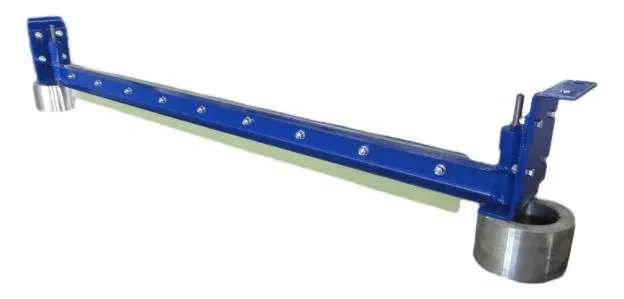 Afrikaans
Afrikaans  Albanian
Albanian  Amharic
Amharic  Arabic
Arabic  Armenian
Armenian  Azerbaijani
Azerbaijani  Basque
Basque  Belarusian
Belarusian  Bengali
Bengali  Bosnian
Bosnian  Bulgarian
Bulgarian  Catalan
Catalan  Cebuano
Cebuano  Corsican
Corsican  Croatian
Croatian  Czech
Czech  Danish
Danish  Dutch
Dutch  English
English  Esperanto
Esperanto  Estonian
Estonian  Finnish
Finnish  French
French  Frisian
Frisian  Galician
Galician  Georgian
Georgian  German
German  Greek
Greek  Gujarati
Gujarati  Haitian Creole
Haitian Creole  hausa
hausa  hawaiian
hawaiian  Hebrew
Hebrew  Hindi
Hindi  Miao
Miao  Hungarian
Hungarian  Icelandic
Icelandic  igbo
igbo  Indonesian
Indonesian  irish
irish  Italian
Italian  Japanese
Japanese  Javanese
Javanese  Kannada
Kannada  kazakh
kazakh  Khmer
Khmer  Rwandese
Rwandese  Korean
Korean  Kurdish
Kurdish  Kyrgyz
Kyrgyz  Lao
Lao  Latin
Latin  Latvian
Latvian  Lithuanian
Lithuanian  Luxembourgish
Luxembourgish  Macedonian
Macedonian  Malgashi
Malgashi  Malay
Malay  Malayalam
Malayalam  Maltese
Maltese  Maori
Maori  Marathi
Marathi  Mongolian
Mongolian  Myanmar
Myanmar  Nepali
Nepali  Norwegian
Norwegian  Norwegian
Norwegian  Occitan
Occitan  Pashto
Pashto  Persian
Persian  Polish
Polish  Portuguese
Portuguese  Punjabi
Punjabi  Romanian
Romanian  Russian
Russian  Samoan
Samoan  Scottish Gaelic
Scottish Gaelic  Serbian
Serbian  Sesotho
Sesotho  Shona
Shona  Sindhi
Sindhi  Sinhala
Sinhala  Slovak
Slovak  Slovenian
Slovenian  Somali
Somali  Spanish
Spanish  Sundanese
Sundanese  Swahili
Swahili  Swedish
Swedish  Tagalog
Tagalog  Tajik
Tajik  Tamil
Tamil  Tatar
Tatar  Telugu
Telugu  Thai
Thai  Turkish
Turkish  Turkmen
Turkmen  Ukrainian
Ukrainian  Urdu
Urdu  Uighur
Uighur  Uzbek
Uzbek  Vietnamese
Vietnamese  Welsh
Welsh  Bantu
Bantu  Yiddish
Yiddish  Yoruba
Yoruba  Zulu
Zulu gravity take up pulley
Understanding Gravity Take-Up Pulleys An Essential Component in Conveying Systems
Gravity take-up pulleys play a crucial role in the operation of conveyor systems, particularly in industries that rely heavily on bulk material handling. These pulleys are designed to maintain the proper tension in conveyor belts, ensuring smooth and efficient operation. By understanding their functionality and importance, we can appreciate how they contribute to overall system performance.
Understanding Gravity Take-Up Pulleys An Essential Component in Conveying Systems
When a conveyor system is started, initial tension is applied to the belt. As materials are loaded and the conveyor operates, stretching can occur due to the weight of the material or due to temperature changes. This is where the gravity take-up pulley comes into play. The pulley is weighted, relying on gravity to apply the necessary tension. When the belt stretches, the pulley moves downwards, allowing the belt to take up the slack while maintaining the optimal tension for operation.
gravity take up pulley

The significance of maintaining proper tension cannot be overstated. Insufficient tension can lead to slippage, where the belt fails to grip the pulley effectively, causing inefficiencies and potential damage. Conversely, excessive tension can cause excessive wear and tear on the belt and components, leading to costly maintenance and downtimes. Thus, a well-functioning gravity take-up pulley contributes to reduced operational costs and improved longevity of the conveyor system.
Installation and maintenance of gravity take-up pulley systems require careful consideration. The pulley must be correctly weighted to ensure it responds accurately to changes in tension. Regular inspections are necessary to ensure that there are no obstructions or wear that could hinder its functionality.
In conclusion, gravity take-up pulleys are integral to the effective operation of conveying systems in various industries. They ensure optimal belt tension, reduce wear and maintenance costs, and ultimately enhance the efficiency of material handling operations. As industries continue to evolve and expand, the importance of such components will likely grow, highlighting the need for ongoing attention to their design and maintenance.
-
Revolutionizing Conveyor Reliability with Advanced Rubber Lagging PulleysNewsJul.22,2025
-
Powering Precision and Durability with Expert Manufacturers of Conveyor ComponentsNewsJul.22,2025
-
Optimizing Conveyor Systems with Advanced Conveyor AccessoriesNewsJul.22,2025
-
Maximize Conveyor Efficiency with Quality Conveyor Idler PulleysNewsJul.22,2025
-
Future-Proof Your Conveyor System with High-Performance Polyurethane RollerNewsJul.22,2025
-
Driving Efficiency Forward with Quality Idlers and RollersNewsJul.22,2025





























